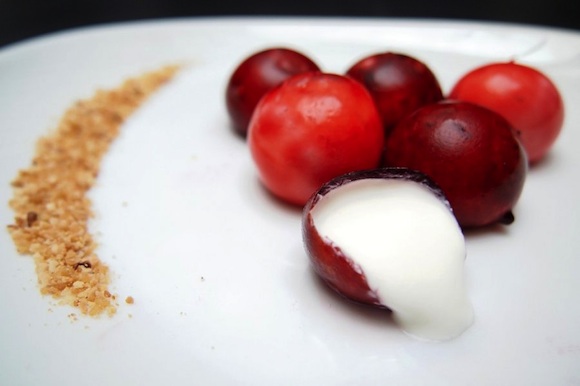As the semester progresses, I'm
starting to feel the toll of university life. From Hall commitments to catching up on school work, I find it increasingly
difficult to wake up in time for lessons every morning. (Especially 8am
lessons). Of course, this results in a mad rush to get ready and
run down to the canteen to get myself some nosh before breakfast ends.
Inevitably, I'll be asking for takeaway which comes in a disposable styrofoam
box.
In Singapore, where
everybody seems to always be in a rush, takeaway styrofoam or plastic boxes are
something most of us cannot live without. The worse thing is that these
styrofoam and plastics will not be accepted by recycling companies according to
NEA's guidelines because they have been contaminated by food & liquid
waste. Which is really such a waste due to the amounts of these materials we
use for food packaging.
Why not create more
biodegradable packaging? Or even edible wrappers which is actually already a
thing. I did a quick google search and stumbled upon this article which stated
that a Harvard Professor, David Edwards developed an type of edible food
packaging known as WikiCells in 2012. It is a container that mimics the natural
covering of fruits and vegetables. Food, both solid and liquid can be contained
by it. The Wikicell even has customized flavoring to match the food that it
packages. Thus far, it has been used to contain icecream, yogurt, soft drinks
etc. Actually, the WikiCell has two layers of shells. The inner (soft) shell is
completely edible whereas the outer shall may or may not be edible, depending
on the kind of WikiCell and how it reaches the consumer. A completely edible
outer shell would allow consumers like us
to just wash and eat it like an apple. On the other hand, the non-edible
but completely biodegradable outer shell can be peeled off like the skin of an
apple.

(Image courtesy of http://www.giantfreakinrobot.com/sci/edible-food-packaging-cut-plastic-waste.html)
I find the idea really
amazing and ingenious, as this eliminates the need for a secondary (usually
plastic) wrapper, Which not only is a waste of plastic but has the potential to
cause even more damage to the environment if not disposed of properly. As
quoted by Professor Edwards himself, " It's as shippable as a standard
package"

WikiCell Yogurt. Image courtesy of WikiCells
However, while I feel
that the WikiCells have the potential to be a viable alternative to plastic
food packaging, I think that consumers might be apprehensive towards actually
eating the WikiCells, Thus, its might take some time for it to catch on in the
market. It is psychologically difficult to accept as we have been so obsessed
about cleanliness and so used to removing wrapping and washing our food before
eating it. This applies especially to those WikiCells with completely edible outer
shells. Futhermore, they might not have enough knowledge of WikiCells to accept
the idea,
I don't think the
average consumer would feel safe just washing the WikiCell before eating,
knowing that it has been shipped as it is without additional plastic packaging.
If this would be the
case, plastic packaging would still be needed in order to ensure successful
sales of the WikiCell and thus defeats the actual purpose of inventing the
WikiCell in the first place.
Seeing as how it has
been 3 years since the invention of WikiCell, and it hasn't really caught on,
to consumers it must not have seemed like a viable alternative to the standard
plastic packaging.
All in all, I believe
the success of this edible packaging invention really depends on us, the
consumers.
References:
National Environment Agency of Singapore (NEA) Vox. "Recycling" 2013
Spector, Dina. "Harvard Professor Tells Us The Full Implications Of Edible Food Packaging." Business Insider. August 30, 2012

No comments:
Post a Comment